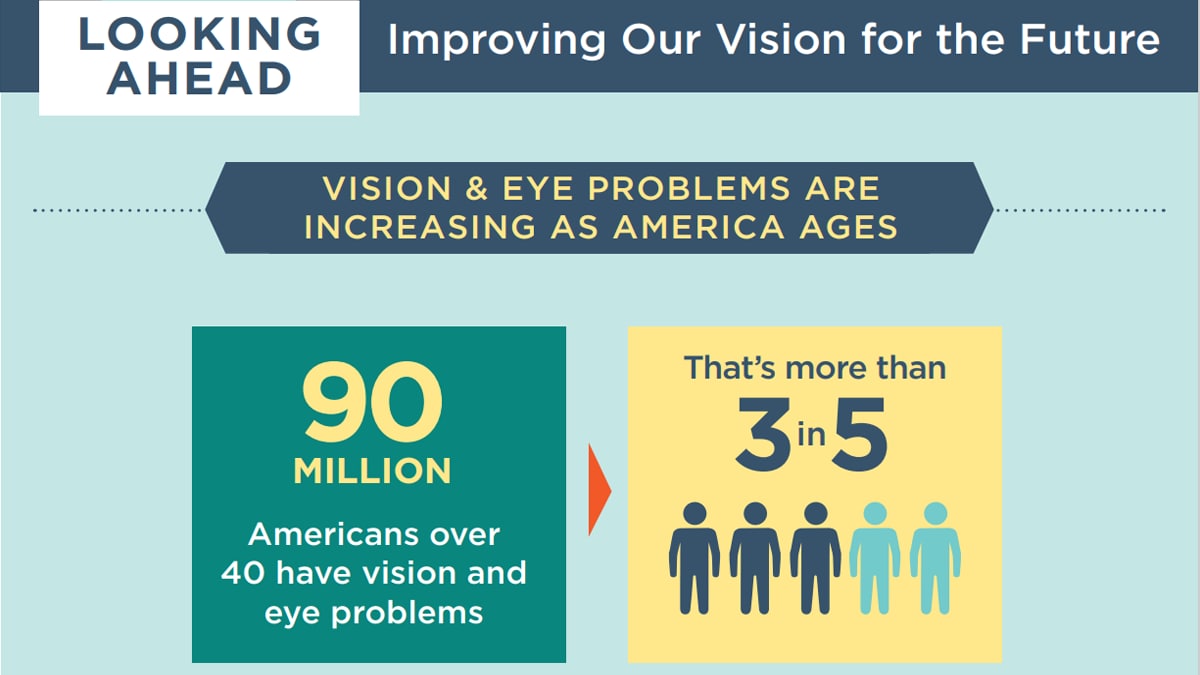Graphic text
Vision and eye problems are increasing as America ages.
90 million Americans over 40 have vision and eye problems. That's more than 3 in 5.
By 2050, without effective interventions:
- Diabetic retinopathy will increase 72%.
- Cataracts will increase 87%.
- Glaucoma will double.
- Age-related macular degeneration will double.
- Vision impairment and blindness will increase 150%.
- Cost of vision problems will increase 157% to $373 billion.
Vision loss touches every part of people's lives.
People with vision loss are more likely to have:
- Type 2 diabetes
- Depression
- Stroke
- Hearing loss
- Chronic kidney disease
Vision loss is also related to:
- Isolation
- Balance problems
- Falls and fall-related injuries
- Risk of early death
Access to eye care + early detection = improved vision health + lower costs
CDCʼs Vision Health Initiative
- Assesses the impact of vision loss and identifies populations at risk.
- Uses applied public health research to develop evidence-based interventions and understand the costs of vision loss.
- Aims to increase awareness of vision and eye health, improve access to vision care, and promote the health of people with vision loss.
- Advances vision and eye health as a public health priority through support of state and territorial health departments.

